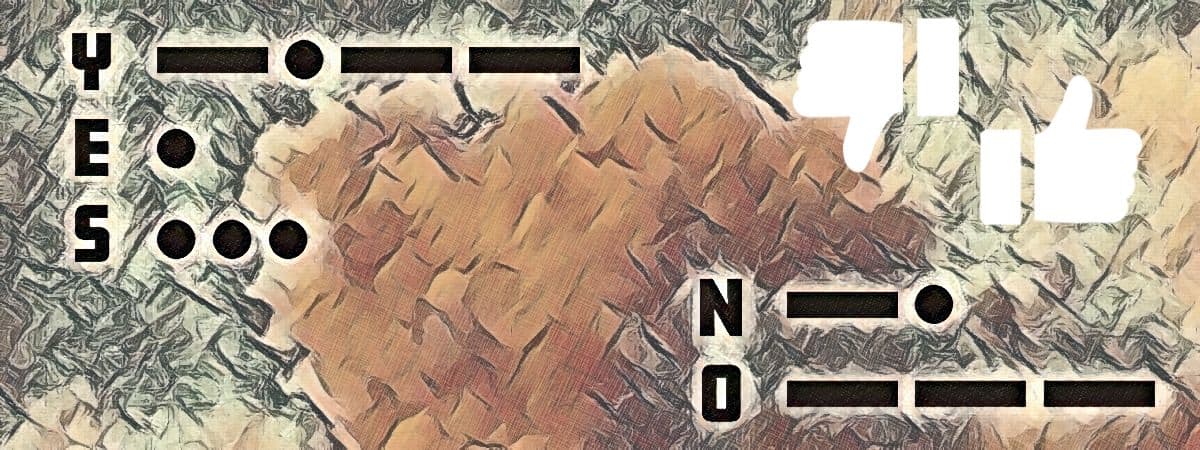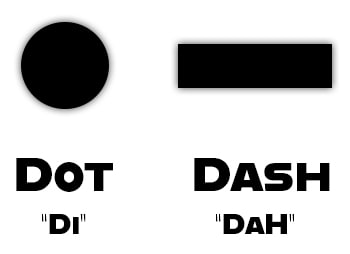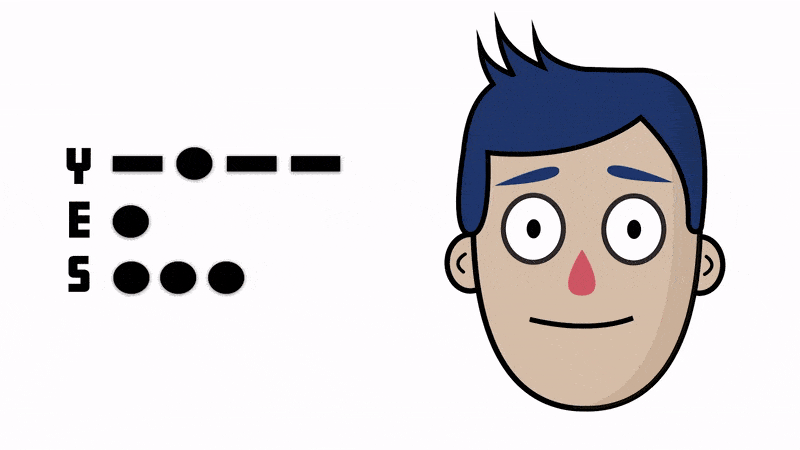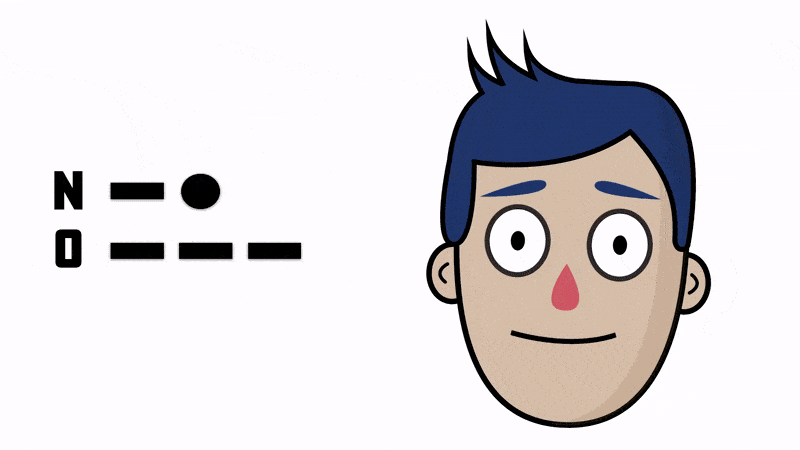The words “yes” and “no” are two of the most important words in any language.
They are used to answer questions, validate or invalidate ideas, or refuse that next shot of tequila.
Without these two words, communication would be near impossible.
By the end of this guide, you will know several more ways to say yes and no using Morse code.
Let’s get to it!
Table of Contents
- How to Use Morse Code
- How to Write “Yes” and “No”
- How to Say “Yes” and “No”
- How to Blink “Yes” and “No”
- “Yes” and “No” With Light
- Wrapping It Up!
How to Use Morse Code
Before we learn the many ways to communicate through Morse code, we need to understand the basics of how to use it.
So let’s first briefly touch on that, or if you would like, you can check play around with our Morse code beginner’s guide.
The first thing that you need to know is that Morse code uses two different symbols—the dot and the dash.
The dot symbolizes a rapid burst of sound, while the dash symbolizes a longer, more pronounced sound.
You can listen to the difference between these two sounds below.
Pretty simple right?
Each character in the Morse code alphabet is made up of a combination of these dots and dashes—some of which we will learn today!
If you’d like to see a full chart of all the Morse code letters, check out our Morse code alphabet guide, where we go through each letter and give some easy ways to remember them.
There are also 5 timing rules used to standardize how we send and receive code.
These rules are:
- The length of a dot is 1 unit of time.
- The length of a dash is 3 units of time—or three times longer than a dot.
- The time gap between dots and dashes is 1 unit of time—or the same length as one dot.
- The time gap between full letters is 3 units of time—or the same length as one dash.
- The pause between complete words is 7 units of time.
That’s it! With the alphabet and basic rules, you start to decode Morse code!
How to Write “Yes” and “No” in Morse Code
Let’s say someone gave you a love letter or asked you to marry them, but a simple yes or no won’t suffice. That’s too easy, and you want to slightly torment them because that’s true love.
Why not answer their question by writing in Morse code?
Let’s look at Morse code symbols that make up yes and no.
Y ─ • ─ ─
E •
S • • •
N ─ •
O ─ ─ ─
When yes and no are laid out on a single line, they look like this.
YES: ─ • ─ ─ • • • •
NO: ─ • ─ ─ ─
How to Speak “Yes” and “No” in Morse Code
Morse code consists of three things: dots, dashes, and spaces. Because of this, you can effortlessly speak Morse code.
We simply need to replace every dot with the sound “di” and every dash with the sound “dah.”
To say “yes” using Morse code, speak the following sounds:
dah-di-dah-dah dit di-di-dit
To say “no” using Morse code, speak the following sounds:
di-dah dah-dah-dah
I’ve also provided some clips of each word that you can use to help master your Morse code speaking!
YES:
NO:
How to Blink “Yes” and “No” in Morse Code
Blinking Morse code can be a challenging but fun way to communicate.
Rather than using dots and dashes, blinking Morse code utilizes two different blinks with two varying durations.
Dots will be represented by short blinks or flutters—like you have something in your eye—, while dashes will be more pronounced blinks as if you are resting your eyes for a split second.
Check out the animation below of our good buddy Rocky blinking “Yes” and “No.”
How to Blink YES in Morse Code:
How to Blink NO in Morse Code:
While these basic communications can be fun to learn, something that could actually be used in an emergency is learning to blink SOS in Morse code.
“Yes” and “No” in Morse Code With a Flashlight
You can signal Morse code with light. To use light to say “yes and no,” we’re simply going to represent our dots and dashes using short and long bursts of light.
This is easily accomplished using a flashlight, or if you have a crafty hand, you can automatically rig up something that blinks your code!
Check out the following message using light.
Strobe Warning! The following videos may potentially trigger seizures for people with photosensitive epilepsy. Viewer discretion is advised.
YES in Morse Code:
NO in Morse Code:
Wrapping It Up!
In this guide, we covered four ways to communicate “yes” and “no” using Morse code.
While Morse code may not be the most effective method to convey information, it can be a lot of fun, especially when nobody else has a clue what you are saying.
If you liked this guide, consider throwing us a share or checking out our others, such as How to Say “I Love You” in Morse Code.
As always, happy dabbling!




